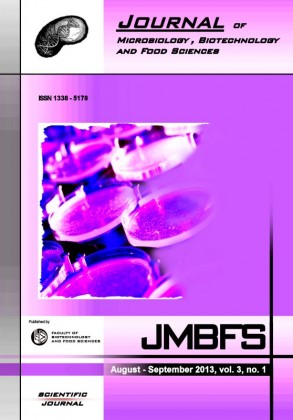DETECTION OF PAENIBACILLUS LARVAE SPORES IN HONEY SAMPLES FROM BEEKEEPERS OF THE CENTRAL REGION OF ALGERIA
Keywords:
Algeria, american foulbrood, detection, honey, Paenibacillus larvae, spreadAbstract
The American foulbrood in one of the most serious diseases that may affect brood of larvae and pupae stages, which cause economic losses and biological hazards in a large beekeeping sector in several countries across the world in general and Algeria in particular. The causative agent of this disease is a bacterium called Paenibacillus larvae that target bees Apis mellifera the latter are often present in honey.The aim of this project is studying the spread of this disease in the northern region of Algeria through the analysis of honey obtained from these areas. Microbiological, microscopic and biochemical methods were used in this study. The results obtained have shown that the prevalence rate varies from region to region, several factors may explain this variation in the prevalence of the disease. The average infection rate for all regions is 32%. To prevent the spread of this disease in Algeria must be taken is mandatory and means of prevention into account.Downloads
Download data is not yet available.
Downloads
Published
2013-08-01
How to Cite
Noureddine, A., lain Karima, A., Nawel, L., Nassiba, G., & Nizar, H. (2013). DETECTION OF PAENIBACILLUS LARVAE SPORES IN HONEY SAMPLES FROM BEEKEEPERS OF THE CENTRAL REGION OF ALGERIA. Journal of Microbiology, Biotechnology and Food Sciences, 3(1), 81–83. Retrieved from https://office2.jmbfs.org/index.php/JMBFS/article/view/7082
Issue
Section
Microbiology
License
Copyright (c) 2013 Adjlane Noureddine, Ameur lain Karima, Lecksir Nawel, Gharabi Nassiba, Haddad Nizar

This work is licensed under a Creative Commons Attribution 4.0 International License.
All papers published in the Journal of Microbiology, Biotechnology and Food Sciences are published under a CC-BY licence (CC-BY 4.0). Published materials can be shared (copy and redistribute the material in any medium or format) and adapted (remix, transform, and build upon the material for any purpose, even commercially) with specifying the author(s).

